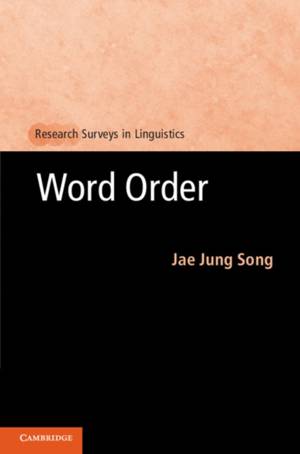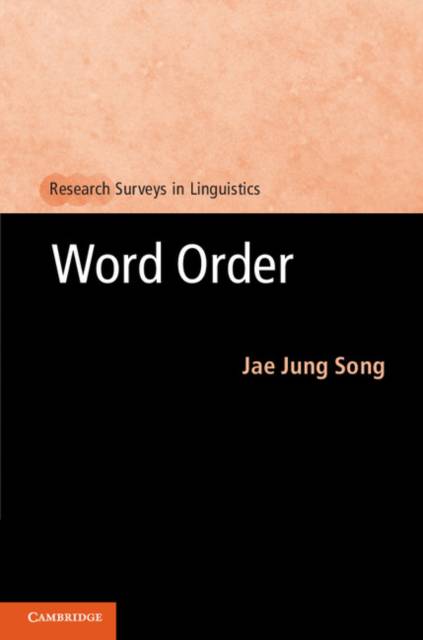
Door een staking bij bpost kan je online bestelling op dit moment iets langer onderweg zijn dan voorzien. Dringend iets nodig? Onze winkels ontvangen jou met open armen!
- Afhalen na 1 uur in een winkel met voorraad
- Gratis thuislevering in België vanaf € 30
- Ruim aanbod met 7 miljoen producten
Door een staking bij bpost kan je online bestelling op dit moment iets langer onderweg zijn dan voorzien. Dringend iets nodig? Onze winkels ontvangen jou met open armen!
- Afhalen na 1 uur in een winkel met voorraad
- Gratis thuislevering in België vanaf € 30
- Ruim aanbod met 7 miljoen producten
Zoeken
Omschrijving
Word order is one of the major properties on which languages are compared and its study is fundamental to linguistics. This comprehensive survey provides an up-to-date, critical overview of this widely debated topic, exploring and evaluating word order research carried out in four major theoretical frameworks - linguistic typology, generative grammar, optimality theory and processing-based theories. It is the first book to bring these theoretical approaches together in one place and is therefore a one-stop resource covering the current developments in word order research. It explains word order patterns in different languages and at different structural levels and critically evaluates (and where possible, compares) the theoretical assumptions and word order principles used in the different approaches. Also highlighted are issues and problems that require further investigation or remain unresolved. This book will be invaluable to those investigating word order, and researchers and students in syntax, linguistic theory and typology.
Specificaties
Betrokkenen
- Auteur(s):
- Uitgeverij:
Inhoud
- Aantal bladzijden:
- 364
- Taal:
- Engels
- Reeks:
Eigenschappen
- Productcode (EAN):
- 9780521872140
- Verschijningsdatum:
- 7/05/2012
- Uitvoering:
- Hardcover
- Formaat:
- Genaaid
- Afmetingen:
- 157 mm x 231 mm
- Gewicht:
- 703 g

Alleen bij Standaard Boekhandel
+ 219 punten op je klantenkaart van Standaard Boekhandel
Beoordelingen
We publiceren alleen reviews die voldoen aan de voorwaarden voor reviews. Bekijk onze voorwaarden voor reviews.











